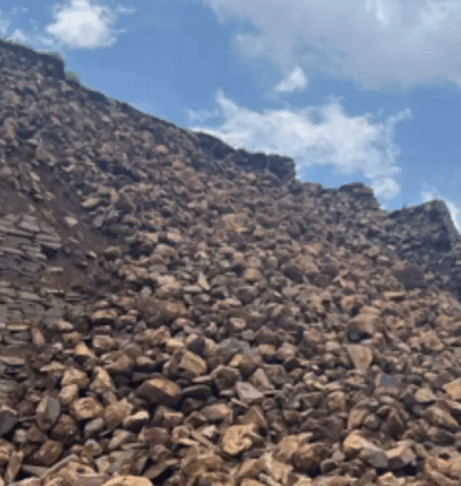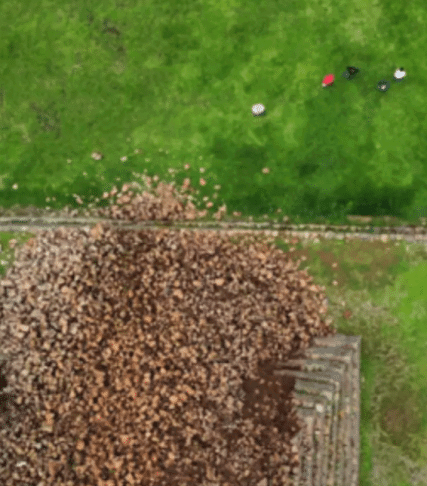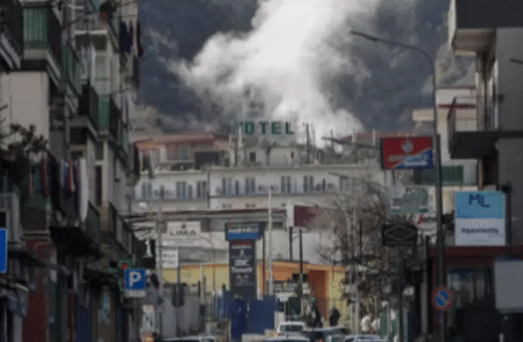An ancient pyramid in Mexico’s Ihuatzio Archaeological Zone has unexpectedly collapsed after a series of severe weather events, sparking concern and fear among locals.
The recent collapse has led some to speculate whether it might be a sign of ominous events ahead. Having served as a sacred site for rituals and ceremonies, its sudden disintegration has stirred both fear and sadness among those connected to its legacy.
The collapse has been linked to climate change

According to the National Institute of Anthropology and History (INAH), heavy rains around Lake Pátzcuaro, with precipitation levels far above average, primarily caused the damage. “High temperatures previously recorded in the area and the consequent drought caused cracks that facilitated water infiltration into the pre-Hispanic building,” explained the INAH. This combination of drought-induced cracks and heavy rain created a perfect storm, leading to the weakening and eventual collapse of the pyramid’s southern facade, as reported by LADBible.
Historical and Cultural Significance

The pyramids in the Ihuatzio Archaeological Zone are more than just ancient structures; they hold deep cultural and historical significance for the Purépecha people and Mexico as a whole. These pyramids were once centers for sacred rituals and religious ceremonies, embodying the spiritual and social practices of the Purépecha civilization. The collapse of such a significant site represents not only a physical loss but also a symbolic one, erasing a tangible connection to the past. The Purépecha empire, which thrived before the Spanish conquest in 1530, left behind few remnants, making the preservation of these sites crucial for understanding their rich cultural heritage.
In response to the collapse, conservation teams have been mobilized to assess the damage and develop plans to secure and repair the pyramid. The INAH has indicated that ongoing efforts will focus not only on recovering the fallen section but also on reinforcing the overall structure to prevent further deterioration. “Damage assessment activities continue and are focused not only on recovering the affected part, but also on thoroughly repairing the structure of the building,” stated the INAH. Previous restoration attempts and the ongoing threat of climate change pose significant challenges to these efforts, but preserving the historical integrity of the site remains a priority.
A Sign of Dark Times Ahead?

For many locals, the collapse of the ancient pyramid is more than just a structural failure; it is seen as a possible harbinger of dark times. Tariakuiri Alvarez, a local resident, expressed his fears on social media, describing the event as a “bad omen.” He wrote, “One of the yakats of the archaeological zone of Ihuatzio collapsed. For the builders—our ancestors—this means a bad omen, indicating that some event is approaching.” Such sentiments reflect a deep-rooted belief in the mystical and symbolic significance of these ancient structures. Alvarez pointed out that, according to local history, a similar incident occurred before the Spanish conquest, seen then as a sign of the gods’ displeasure.
Preserving the Legacy of the Purépecha
The collapse of the pyramid at Ihuatzio serves as a stark reminder of the vulnerability of our cultural heritage to the forces of nature and time. For the modern Purépecha people, preserving these ancient sites is not only about safeguarding history but also about maintaining a connection to their ancestral identity. The recent events highlight the need for increased efforts in conservation and the importance of addressing the broader impacts of climate change.
As the world watches the unfolding situation in Ihuatzio, it is clear that the fight to preserve our shared cultural heritage is more urgent than ever.
